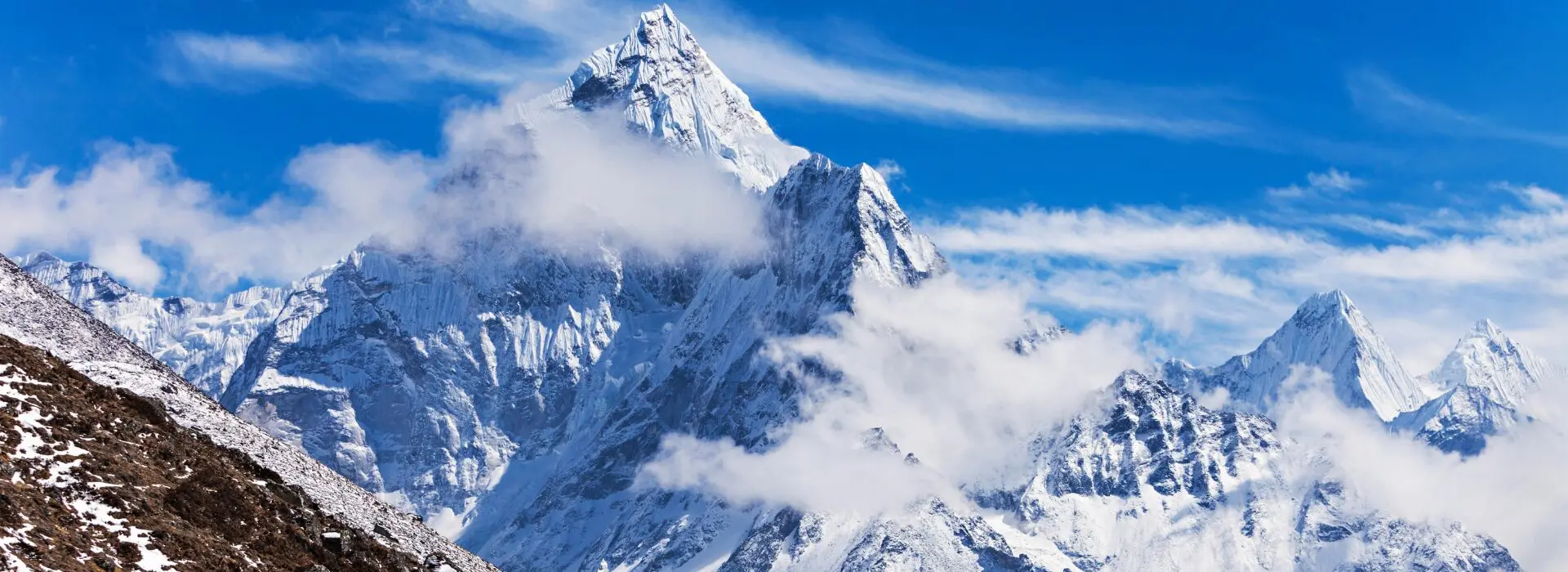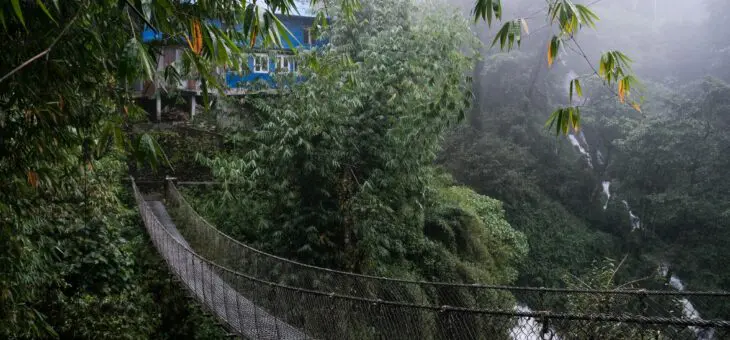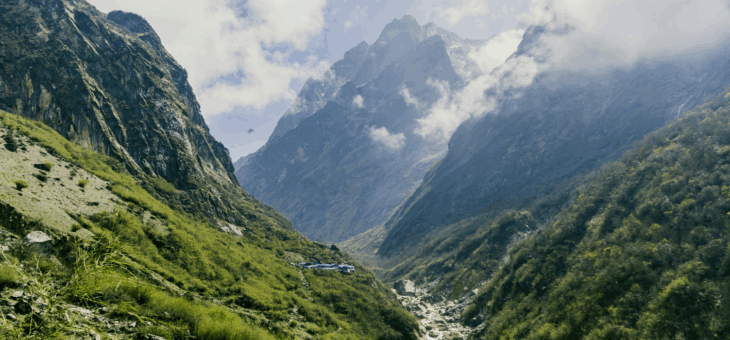Ama Dablam is one of the most visually stunning peaks in Eastern Nepal, standing at 6,812m. Although smaller than some of its towering neighbors, such as Everest or Lhotse, Ama Dablam’s steepness and exposure make it one of the most technically challenging climbs in the region – but exactly how hard is it to climb Ama Dablam? Read on to find out!
Overview of Climbing Ama Dablam
Despite its lower elevation compared to other Himalayan giants, climbing Ama Dablam is not to be underestimated. The route to the summit is extremely steep and exposed, with several technical sections. From Ama Dablam Base Camp at 4,750 meters to the summit itself, you will encounter mixed terrain—ranging from grassy ridges and boulder fields to sheer rock faces and snow-covered slopes.
The climb is primarily conducted on fixed ropes. However, these ropes do not eliminate the difficulty; in fact, some pitches are nearly vertical, presenting a serious challenge at such high altitudes. To successfully reach the summit of Ama Dablam, you need to be familiar with this technique, and also have excellent upper body and core strength.
Acclimatisation before Climbing Ama Dablam
One unique aspect of our Earth’s Edge Extra 2025: Ama Dablam expedition is the itinerary for our approach through the Gokyo Valley. This route not only offers a more scenic and less-traveled path, but also allows for acclimatisation by crossing over the Cho La Pass (5,420m) and summiting Lobuche East (6,119m) before heading to Ama Dablam Base Camp. This progressive gaining of altitude will help you to better prepare for the physical demands of Ama Dablam while also enjoying more of the Everest region’s breathtaking landscapes.
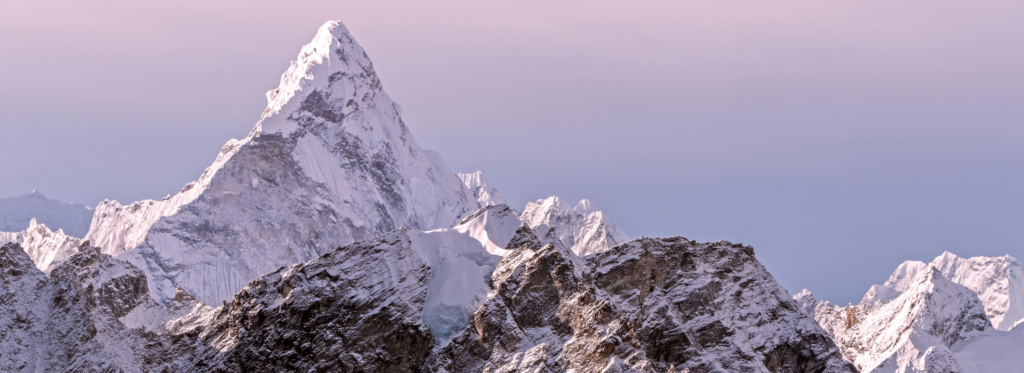
Technical Aspects of Climbing Ama Dablam
We have classified Ama Dablam as a Level 9 expedition, meaning it requires an exceptionally high level of both physical and mental fitness. You need prior experience at altitudes above 6,000m and must be comfortable on steep and exposed terrain. Rock climbing experience up to grade severe, as well as skills in scrambling, are highly recommended. The terrain is a combination of rock, ice, and snow, and you will spend long periods balancing on the points of your crampons, which demands strong calf muscles and technical expertise.
Climbing Ama Dablam also involves carrying a heavy pack (up to 20 kg) for hours of hiking each day, which can be grueling at high altitude. Given these challenges, we advise you to undergo winter skills training and attend a rock climbing course before attempting Ama Dablam, to ensure you are well-prepared for the technical demands.
The Summit Window on Ama Dablam
- Day 19: Base Camp to Camp 1 (5,700m)
The climb begins by ascending grassy moraine ridges that quickly give way to scree fields. After crossing a boulder field at 5,300m, the route follows cairns to the base of the southwest ridge, where you will encounter your first technical rock slabs and begin using fixed lines to reach Camp 1. We choose to spend our nights in Ama Dablam Base Camp in a teahouse to ensure a comfortable rest prior to beginning the ascent. - Day 20: Camp 1 to Camp 2 (5,900m)
From Camp 1, the terrain becomes a mixture of rock and snow, with several difficult sections, including the infamous Yellow Tower. This 15m vertical pitch is the hardest part of the route and a real test of strength and technique, especially with a heavy pack in the thin mountain air. Camp 2 is perched precariously on the ridge, offering a truly exposed (and exhilarating!) place to spend the night. - Day 21: Summit Day (6,812m)
The final push to the summit is a combination of snowy ridges, couloirs, and exposed ice sections. After navigating the Mushroom Ridge, you face the last steep snowfield that leads to the summit. The final ascent requires crossing a bergschrund and ascending further steep slides. Descending from the summit is equally challenging, as you must rappel off the mountain and navigate many of the same technical sections on your way back to Camp 1 or Camp 2. - Days 23 – 25: Spare Summit Days
Mental and Physical Endurance Required for Climbing Ama Dablam
In addition to physical strength, mental fortitude is essential for anyone attempting to climb Ama Dablam. The combination of high altitude, exposure to the elements, and the continuous physical effort over several days can wear down even the fittest of climbers. Conditions on the mountain can change quickly, and weather can turn severe, requiring adaptability and resilience.
Moreover, the rappelling descents from the summit and other camps can be mentally taxing after the exertion of the climb, as you must remain focused to safely navigate the fixed ropes on exposed faces.
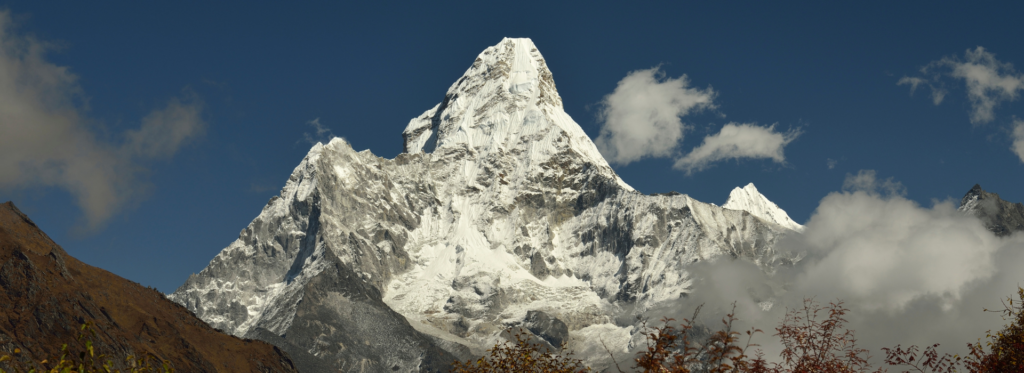
conclusion
Climbing Ama Dablam is a monumental challenge, demanding not only exceptional fitness and technical skill but also resilience, mental strength, and adaptability. Its steep, exposed terrain, combined with the altitude, makes it a difficult, but incredibly rewarding climb. For experienced climbers looking to push their limits in the Himalayas, Ama Dablam is a peak that offers both beauty and an intense sense of accomplishment.
Think you’re up for the challenge? You can read more about our epic Earth’s Edge Extra 2025 expedition to Ama Dablam here!
